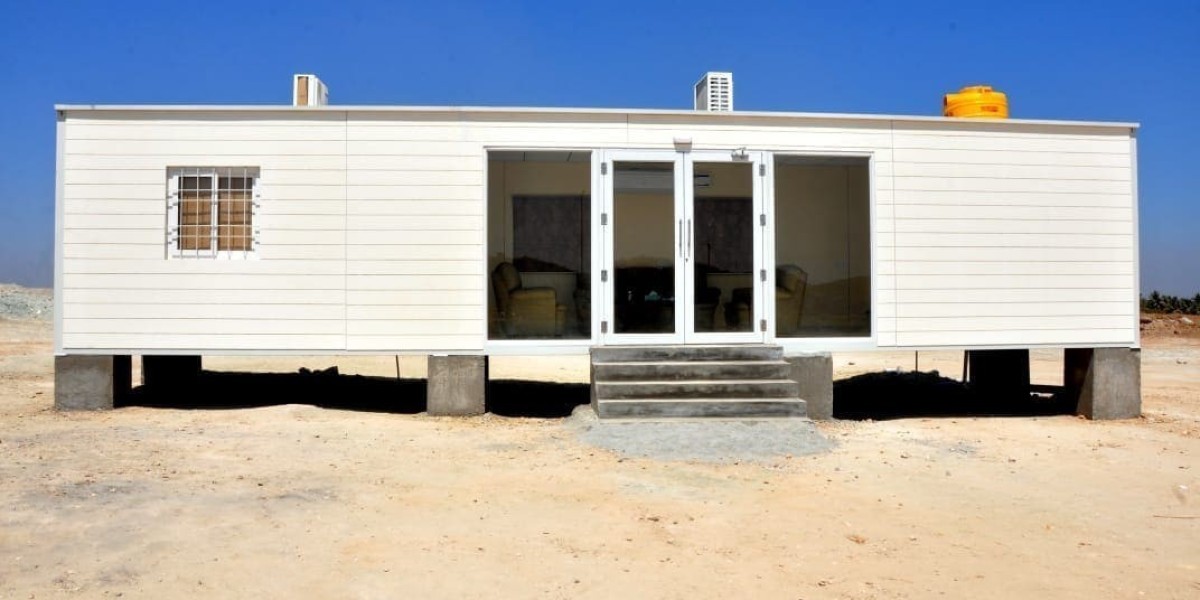Effective Prefab Construction Methods
Prefabricated construction, also referred to as modular construction, is a category of building element or module produced in an industrial environment under regulation. After that, these parts are shipped to the construction site and assembled to create the entire structure. This process replaces or enhances conventional on-site construction techniques, where every building element is produced on-site. Numerous issues with congested, active, and dense urban construction sites are resolved by prefabricated construction. It can be quite difficult to transport materials and equipment both inside the site and outside, which would raise expenses and cause delays. All these issues can be perfectly resolved with prefab construction.
Types Of Prefab Construction
Prefabricated materials include steel and concrete parts as well as various material combinations. The following are a few types of prefab building:
Modular Construction
This process entails assembling whole building units like rooms or floors in a factory before delivering them to the construction site. This technique is frequently applied to multi-story structures like hostels, hotels, and residences.
Timber Framing
Due to its ease of usage, this prefabrication construction process for timber homes continues to gain popularity. Before being delivered to the site of the construction, a timber frame panel is constructed in the factory. One benefit of the timber framing technology is that it makes it easier to install prefabricated buildings quickly.
Hybrid Prefab
In hybrid prefab systems, the two- and three-dimensional parts of modular and panel systems are assembled to make a whole structure or a single portion of a different one. These prefabricated steel structures have traits in common with modular and panel systems. Although they are superior in terms of quality and care to detail, these modular modules have disadvantages in terms of assembly and shipment.
Concrete Systems
Precast concrete panels are something you should think about adding to your prefabricated construction for enhanced durability and aesthetic appeal. Because concrete is heavier than the majority of materials used in construction, these factory-cast concrete components strengthen your building. Additionally, choosing concrete systems can result in financial savings.
Panelised Construction
Panelized construction comprises the production of roof trusses, wall panels, and floor panels in a factory. The structural frame of the building is then formed by assembling these panels once they are delivered to the construction site. Panelized construction is widely used in residential and small commercial buildings.
Ferrocement Sandwich Panel
A form of laminated building material called ferrocement is frequently used in buildings in developed nations. Applications include water tanks, walls, silos, chemises, infill frames, and marine structures, to name just a few. Sand, wire mesh, cement, and water make up ferrocement, which has a number of advantageous properties like antirust, fire resistance, seismic stability, and hurricane resistance. It's also used for modifying older buildings or repairing damaged ones.
Volumetric Construction
The process of making volumetric components or three-dimensional modules is known as volumetric construction. These units can be whole rooms or sections of a building, including entire living rooms, kitchens, or restrooms. Volumetric construction is often used in hotels, dorms, and medical facilities because it offers excellent quality control.
Differences Between Prefab Construction Methods And Traditional Construction
Prefab and traditional construction are distinct from one another due to their unique characteristics.
Cost
Due to factors like different building parts, labour time, labour shortages, weather, and other unknowable variables, traditional construction expenses can mount up.
Because 90% of the fabrication of prefabricated construction is done in a regulated factory setting, it is less expensive.
Construction Speed
Prefabricated construction has shorter construction periods than traditional construction; prefab can be completed in 6–8 weeks or less, whereas traditional construction takes 6–16 months on average to complete.
Sustainable Factor
Most prefabricated houses can be recycled or used again. They use less energy.
Concrete buildings are destroyed and cannot be fully disassembled in a safe manner.
Design
Because traditional construction uses on-site built parts, it is highly adaptable to custom designs.
The design of prefabricated construction modules is subject to certain restrictions.
Workers Safety
Because prefabricated component manufacture is done in a controlled environment within the manufacturing facility, worker safety is guaranteed.
Traditional constructions are built on-site with the assistance of labour, and frequently there are no safety precautions or adequate training provided to the labourers, posing a risk to their lives.
Benefits Of Prefabricated Construction
Prefabrication is becoming more and more prevalent in construction projects due to its benefits. It provides solutions that are fit for the future and can handle the changing demands of building while maintaining sustainability. The following are some advantages of prefab:
- Using prefab techniques helps expedite building and save expensive delays. Prefab components can save up to half of the construction time compared to traditional building methods because they are constructed and installed off-site in a controlled setting.
- Prefabricated materials, which range from light-gauge steel frames to precast concrete panels, are frequently incredibly sturdy and designed to withstand long-distance transportation to the site. They stay clear of problems that more conventional materials frequently have.
- Prefab parts can be individually inspected for quality requirements prior to being delivered to the construction site. Additionally, prefabricated materials can be examined to ensure they meet safety requirements, such as fire resistance testing.
- Construction component manufacturing in a specialised warehouse minimises the quantity of labour needed on-site. This implies that in the midst of the chaos caused by truck deliveries, moving crane arms, and other possible hazards, fewer people will be completing less work in less time. This reduces the chance of accidents and the associated delays, paperwork, and consequences.
- Prefabricated building materials are an affordable option for construction projects. Shorter building times translate into lower labour and production costs. Standardised measurements, mass production, and bulk purchases of prefabricated structures result in economies of scale savings. Certain prefabricated materials offer insulating qualities that might lower heating and cooling energy expenses.
- Eco-friendly or recycled materials or both are frequently used in modern prefabricated materials. This might allow for the substitution of one material for another when new production techniques decrease the overall ecological impact, or it might take advantage of locally or seasonally available timber. Moreover, there is not much construction trash.
Why Choose Pressmach?
The Chennai-based Pressmach is an expert in residential, commercial, and institutional construction. Pressmach leads the way in prefab construction in India, revolutionizing the building industry with innovative solutions.They are currently regarded as one of India's top producers of prefabricated buildings, having over 36 years of expertise. Whether it's a temporary setup or a permanent operation, they offer reasonably priced, sturdy structures that are resistant to external forces and unfavourable weather. They build structures with the goal of perfect execution, constant quality control, and careful material selection. Their organisation comprises a group of industrious and highly driven individuals who put out endless effort to produce project deliverables that are goal-oriented for their customers.








